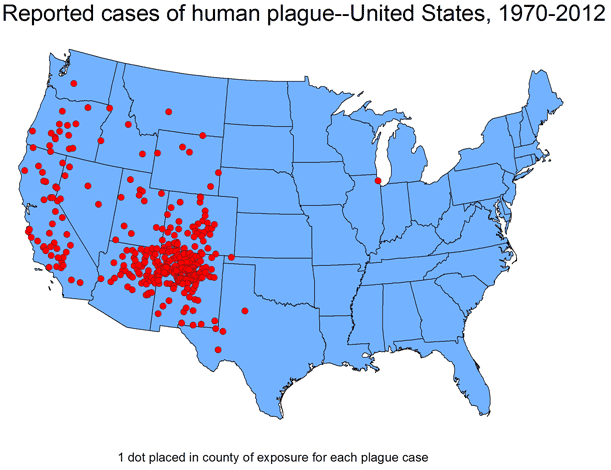There's some alarming news coming out of Idaho that will make you think we're back to living in the old times.
The state's Central District Health Department confirmed that a child in Elmore County has been infected with the plague, making him the first human to be diagnosed with the deadly disease in Idaho since 1992.
The plague is back
While the plague hasn't infected a human in Idaho in over two decades, in 2016, authorities revealed that squirrels from the area the boy lives have contracted the disease.
Officials believe that the boy, who remains unidentified, was exposed to the disease either in Idaho or while on a recent trip to Oregon, where eight people have become infected since 1990.

The child became ill with the form of the disease called the bubonic plague, but he was treated with antibiotics at a hospital and is reportedly recovering at home in stable condition.
Many people thought the plague was totally eradicated from the world, but it turns out, there are a few cases of the bubonic plague, which affects the lymph nodes and causes gangrene, that occur today.
While it killed around 50 million people back in the 1400s, between 2010 and 2015, only 584 deaths were caused by the plague, according to WHO.

In 2017, officials in Arizona's Navajo County and Coconino County confirmed that the fleas in the region tested positive for the plague and issued a warning to the public so they could take precautions.
"Navajo County Health Department is urging the public to take precautions to reduce their risk of exposure to this serious disease, which can be present in fleas, rodents, prairie dogs and predators that feed upon these animals," the public health warning states. "The disease can be transmitted to humans and other animals by the bite of an infected flea or by direct contact with an infected animal."
According to the Centers for Disease Control and Prevention (CDC), studies have shown that outbreaks tend to occur during cool summers that follow wet winters.
Most cases occur in Northern Mexico, northern Arizona, southern Colorado, California, Oregon and far western Nevada.
How do you know it's the plague?

According to health officials, the plague, which was first brought to the U.S. by rat-infested steamships in the 1900s, affects people of all ages, but 50% of the cases occur between the ages of 12 and 45 years old.
Symptoms of the plague appear within two to six days after exposure and includes sudden onset of fever, headaches, chills, and fatigue. Some people may experience pain in their lymph nodes under the armpit.
The bacteria spreads fast, so it needs to be treated right away. A laboratory test will be required for it to be properly diagnosed because the plague is hard to identify during its early stages.
It is usually treated with antibiotics, but there's still a 30-60% fatality rate if left untreated for too long.

Protect yourself
"Plague is spread to humans through a bite from an infected flea. People can decrease their risk by treating their pets for fleas and avoiding contact with wildlife," Sarah Correll, a Central District Health Department epidemiologist, said in a statement. "Wear insect repellant, long pants and socks when visiting plague affected areas."
Squirrels and other rodents also help spread the deadly disease, so the CDHD is discouraging people from feeding them in parks, picnic areas, and campgrounds. You should also never handle an ill or dead rodent.

Health officials also recommended that you:
- Visit your doctor if you're experiencing sudden and high fever
- If you have pets, keep them away from hunting rodents. If your pet becomes sick after coming into contact with a rodent, pay the veterinarian a visit right away. Don't hesitate to ask for flea control products.
- Don't leave pet food or water bowls in areas were other animals can access them.
- Mow the lawn regularly, keep wood piles nearly stacked, and get rid of weeds.
- Place compost and leaf piles as far away from your home as possible.
So, no, you shouldn't worry about visiting Idaho, Oregon, or any of the high risk states, but you should always be vigilant and take the necessary precautions to protect yourself from the Black Death.
Do you or anyone you know live in Idaho? Let us know!

